Archived Fire Damage Blog Posts
Staying Warm This Winter: Safe Heating Tips for Texas Residents | SERVPRO of Temple & Belton
10/7/2024 (Permalink)
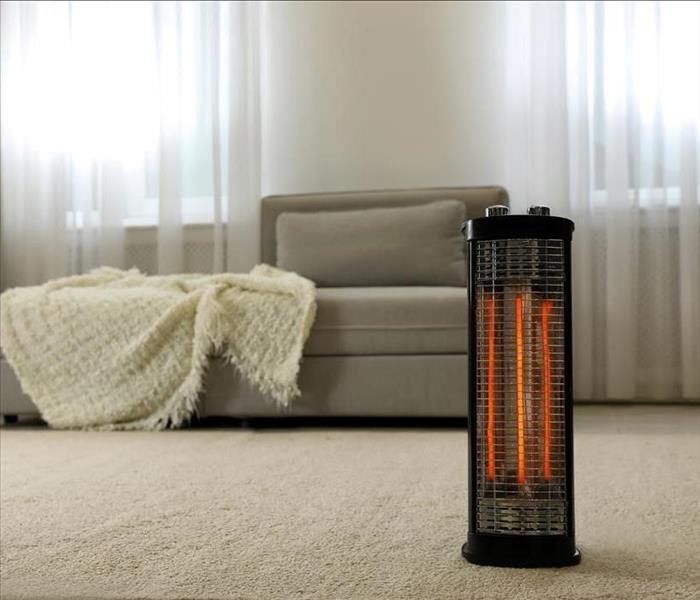 Stay warm and safe this winter with these helpful tips! Contact SERVPRO of Temple & Belton for fast fire restoration services.
Stay warm and safe this winter with these helpful tips! Contact SERVPRO of Temple & Belton for fast fire restoration services.
As winter settles across Texas, keeping your home warm and cozy becomes a top priority. While chilly temperatures can prompt many to crank up the heat, it’s essential to remember that safety should never take a back seat. Each year, numerous home fires are reported due to improper heating practices.
At SERVPRO of Temple & Belton, we want to help you stay warm without increasing your risk of fire. Here are some effective ways to maintain comfort in your home during the colder months while ensuring your safety.
Optimize Your Home's Insulation
One of the most effective ways to keep your home warm is to improve its insulation. Proper insulation not only helps maintain a comfortable temperature but also reduces the need for excessive heating. Start by checking for drafts around windows and doors, as these can significantly contribute to heat loss.
Use weatherstripping or caulk to seal any gaps. Additionally, consider adding insulation to your attic, walls, and crawl spaces to further enhance your home's thermal efficiency. By optimizing your insulation, you can keep your home warm while relying less on heating devices that could pose a fire risk.
Choose Safe Heating Alternatives
If you’re looking for ways to heat your home safely, consider alternatives to traditional heating methods. Electric space heaters are popular, but it’s crucial to use them responsibly. Always follow the manufacturer's instructions, and never leave a space heater unattended. Place it on a stable, flat surface away from flammable materials such as curtains, bedding, and furniture.
Alternatively, you might consider investing in a wood or pellet stove, which can be an efficient way to heat your space. Just ensure that your chimney is clean and properly maintained to prevent creosote buildup, which can lead to chimney fires. Whatever option you choose, be mindful of safety precautions to minimize any fire risk.
Maintain Your Heating Systems
Regular maintenance of your heating systems is key to preventing fires and ensuring they operate efficiently. Schedule a professional inspection for your furnace or heating system before the winter season begins. A technician can identify potential issues and ensure that your system is functioning safely. For those who use fireplaces, make sure to have them inspected and cleaned at least once a year. Keep the area around your fireplace clear of combustible materials, and always use a screen to catch embers.
Additionally, remember to test your smoke detectors monthly and replace batteries as needed. These proactive measures will not only keep you warm but also provide peace of mind knowing you’ve reduced the risk of fire.
As the temperatures drop this winter, staying warm is essential, but so is ensuring the safety of your home and family. By optimizing your insulation, choosing safe heating alternatives, and maintaining your heating systems, you can create a comfortable living environment without increasing your fire risk.
At SERVPRO of Temple & Belton, we understand the importance of safety during winter months. If you do experience any fire-related emergencies or need assistance with restoration, our team is ready to help.
Quick Tips for Fire Safety in the Kitchen | SERVPRO® of Temple & Belton
9/6/2023 (Permalink)
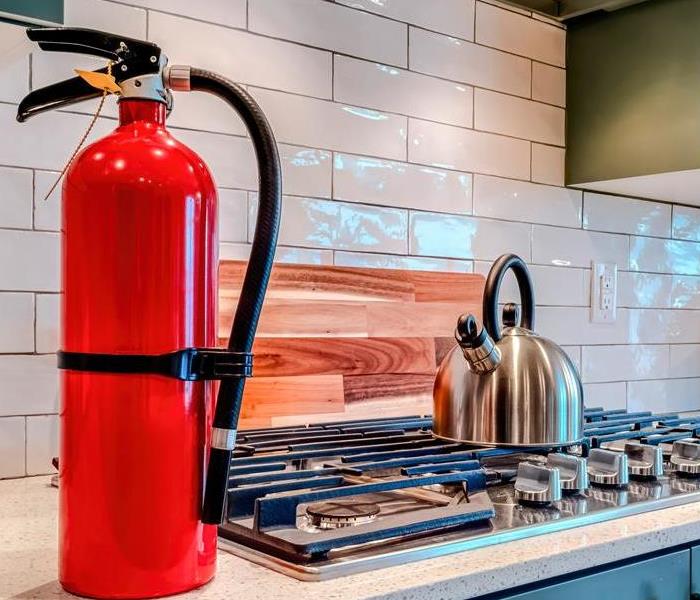 Fire extinguisher and cooktop with kettle on the countertop inside home kitchen
Fire extinguisher and cooktop with kettle on the countertop inside home kitchen
We all have our favorite recipes that we love to make, whether they are quick easy mac recipes or fully involved gourmet meals. Either way, we spend a lot of our time in the kitchen making food! It should be no surprise then that the majority of home fires are started in the kitchen.
Kitchen fires can get out of hand in seconds and cause extensive damage to your rooms or even to your entire home. Knowing what to do when a kitchen fire does break out can help stop the flames in their tracks and prevent widespread damage.
Our fire damage restoration team explains some easy ways to control any flames in your kitchen below, so check it out to learn more.
Smart Kitchen Tips
It only takes a few seconds for a kitchen fire to break out, which is why it is crucial that you stay near your heat source. The oven, stove or even the toaster can malfunction and start on fire when you step out for just a second to grab something.
You should keep a lid nearby for when you are cooking. If a spark or flame starts up in your pan, you can quickly throw the lid over it to smother the flames.
You should also take steps to reduce the amount of flammable materials in your kitchen. A wandering spark near a kitchen towel or a wooden spoon left too close to a burner is all it takes for a fire to catch and spread. Be sure to keep a fire extinguisher in your kitchen at all times for emergencies like this.
When a Fire Starts
If a fire does start and you are not able to put it out right away, back away and call 911. Fire can consume an entire room in minutes, and your safety is your top priority. If the fire is relatively contained, you can certainly stay to fight the fire quickly.
Just remember, water should never be used on a grease fire since water can disrupt the hot oil and cause an even bigger problem. Grease fires should always be smothered or put out with a fire extinguisher. If a fire starts in your oven, shut off the heat and DO NOT open the door. Keep it closed to shut off the oxygen supply.
Our Fire Damage Restoration Process
You extinguished the fire yourself or the fine men and women of the Temple or Belton Fire Departments did it for you. Now the reality of your situation may begin to set in and you might be overwhelmed by the damage in front of you. It’s time to call us to handle your entire restoration!
We will remove damaged debris, clean and sanitize your space, and we can tackle any and all repairs to get your home back to its preloss condition as fast as possible. We can even make sure all of the residual smoke odor has been removed from your home.
Kitchen fires can cause widespread damage in minutes. Contact SERVPRO® of Temple & Belton for a full recovery.
Why Is My Fire Alarm Beeping? Common Reasons and Solutions
4/16/2023 (Permalink)
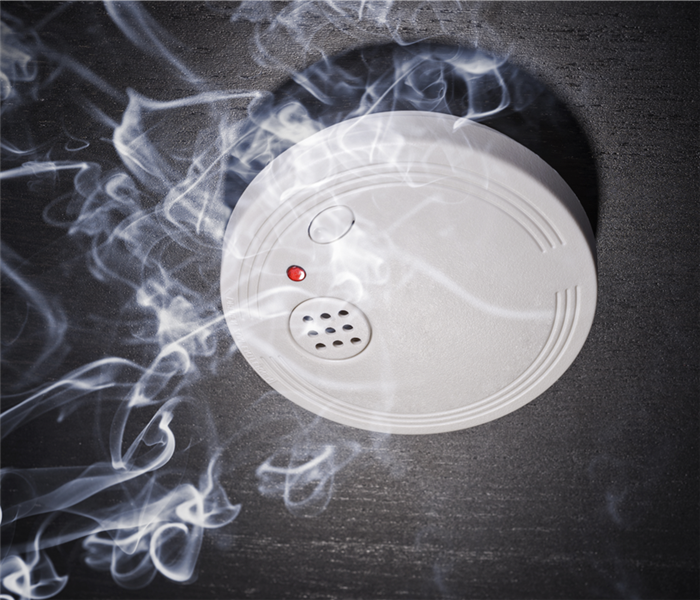 Here are some common reasons why your fire alarm might be beeping.
Here are some common reasons why your fire alarm might be beeping.
Your fire alarm is one of the most important safety features in your home, alerting you to potential danger and allowing you to take action quickly. However, if your fire alarm is beeping or chirping, it can be frustrating and even alarming. Here are some common reasons why your fire alarm might be beeping.
Low Battery
One of the most common reasons why fire alarms beep is due to low battery. Many fire alarms are designed to beep periodically to let you know that the battery is running low and needs to be replaced. If your fire alarm is beeping, check the battery and replace it if necessary.
End of Life
Just like batteries, fire alarms have a limited lifespan. Most fire alarms are designed to last for about 10 years. When a fire alarm reaches the end of its life, it will start beeping to let you know that it needs to be replaced.
Dust and Debris
Dust and debris can accumulate inside your fire alarm over time, causing it to beep or chirp. If you notice that your fire alarm is beeping and you've already replaced the battery, try cleaning it with a soft brush or compressed air to remove any dust or debris.
Humidity
High humidity can also cause fire alarms to beep. This is because moisture can get into the electronics of the fire alarm, causing it to malfunction. If your fire alarm is located in a humid area, try moving it to a dryer location.
Wiring Issues
If your fire alarm is hardwired into your home's electrical system, wiring issues can cause it to beep. This could be due to a loose connection or a problem with the electrical system itself. If you suspect that wiring issues are causing your fire alarm to beep, contact a licensed electrician to diagnose and fix the problem.
Smoke and Fire
Of course, the most obvious reason why your fire alarm might be beeping is due to smoke or fire. If your fire alarm is beeping continuously and there is no obvious reason, such as low battery or dust, it could be a sign of smoke or fire. In this case, evacuate your home immediately and call the fire department.
In conclusion, if your fire alarm is beeping, it's important to investigate the cause and take action as necessary. Common reasons for beeping include low battery, end of life, dust and debris, humidity, wiring issues, and smoke and fire. By addressing the cause of the beeping, you can ensure that your fire alarm is functioning properly and keeping you and your family safe.
Home Fire Evacuation Plan
2/24/2023 (Permalink)
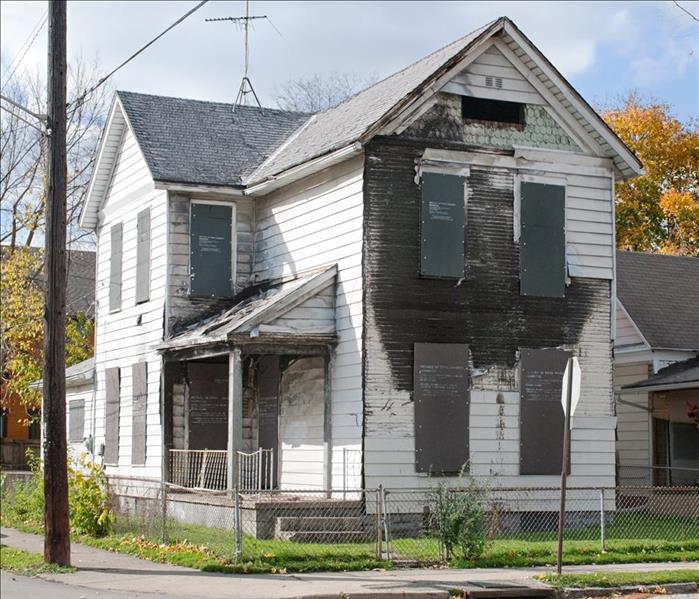 Fires are serious threats to your home and family.
Fires are serious threats to your home and family.
Fires are one of the most dangerous events you can encounter in your home. If a fire breaks out, it is important that you know how to escape and have safety strategies in place.
Escape routes and safety strategies
Escape routes are the paths you should take if a fire occurs. Here are some tips for choosing the best escape route. The safest place to be during a fire is outside, away from your home. If you're inside, stay on the lowest floor possible. Don't use elevators that could become trapped by rising heat and smoke or power outages caused by an electrical fire nearby. If you have children or pets, make sure they know how important it is to follow these rules as well.
Family meeting place
Your family meeting place should be a location where everyone can meet up after the fire and stay together. This is usually a safe location in your neighborhood, away from the fire. The meeting place should also be easily accessible by everyone, especially those with mobility issues.
Your family meeting place should be visible to you at all times and should not change unless you rotate it or make changes to your evacuation plan. It may be helpful to have an additional visual marker (like an object) that's easy for others outside your home to see in case they're not familiar with your community or neighborhood.
Plan and practice your escape route
Once you have a plan in place for your escape route, mark the route with signs and tape, and practice it regularly, especially with children. Keep the route clear of clutter, furniture, appliances and anything else that would obstruct your path to safety. Make sure to change anything as you extend your family or any changes are made to the home.
Make yourself heard
There are many ways to make yourself heard, so you’ll want to select the method that works best for your home. If you don’t have an alarm system or smoke detector, consider having one installed.
If you do have a fire alarm, use it by sounding it loudly with the pull string or button on the unit. The sound of an alarm will alert people who are sleeping and disoriented but may not necessarily be able to hear someone shouting from another part of the house.
If you have a smoke detector installed in your home, follow its instructions. Ensure you keep the smoke detectors tested to ensure they are working in case of a fire.
Have a family meeting place
When a fire breaks out, it's critical that you and your family get to a safe place as quickly as possible. The best way to do this is to have a meeting place outside where everyone can meet up if they are separated. Ideally, the meeting place should be outdoors and not far from the house—but it should also be free of other dangers like downed power lines or trees that could fall on top of you.
If possible, try to pick an area that has good visibility so you can see each other from afar if needed. It's also important that there aren't any obstacles between your house and the meeting place, such as bushes or fences between them (if so, consider clearing some space around those areas). Finally, make sure everyone knows how long it'll take for them to get there in case something happens along their route!
Recovery after a fire
Recovery after a fire is an important part of the process. Have a plan for what to do with your pets, valuables, and personal belongings. Consider storing items that are especially precious or valuable in a safe place outside of your home. If you have access to an off-site storage facility or other secure location that's not connected to the internet (and thus less likely to be compromised), this can help give you peace of mind and reduce anxiety during recovery efforts.
Fires are serious threats to your home and family. They spread quickly and can cause extensive damage, even death if you don't escape in time. The best way to minimize the damage a fire cause is by planning ahead and having an evacuation plan in place. A well-thought-out evacuation plan can help you keep yourself and your family safe, as well as save your home from burning down entirely.
How to Create a Fire Escape Plan Like a Pro
8/25/2022 (Permalink)
 Creating a fire escape plan is the ultimate fire safety precaution you can take.
Creating a fire escape plan is the ultimate fire safety precaution you can take.
Here Are The Basic Steps To Creating a Fire Escape Plan
In the unfortunate event of a house fire, you have approximately 3 – 4 minutes to leave the house. That means there is no time to waste or save a prized possession. You can only afford to implement an emergency escape plan before calling the firefighters.
Here are the basic steps to creating a fire escape plan in Academy, TX:
- Install fire alarms
- Create the plan
- Practice it
Install Fire Alarms
The most important part of any fire safety plan is installing smoke detectors in and outside the bedrooms. That should give you a head start when a fire breaks out and provide a rough idea of where the blaze might be. Also, you might want to let the kids know how a fire alarm sounds like, so they can never confuse it for something else.
Create the Plan
Once you have the detectors in place, it’s time to make the actual plan. Draw a map of the house and label every entry point before formulating the escape routes. Make sure every bedroom has two exits (window and door), and ensure they are in good working condition. Finally, agree on a meeting spot that is on the street side of the house.
Practice the Plan
Having a great fire escape plan is one thing, and knowing how to use it is another. To avoid confusion, make sure you practice the program at least twice a year. It should be as realistic as possible; and, don’t forget to assign someone to help people with physical limitations such as kids and the elderly. You might also want to acquire a foldable ladder to help people escape through the first-floor windows.
Creating a fire escape plan is the ultimate fire safety precaution you can take as a homeowner in Academy, TX. It is a proven way of saving lives and property in the event of a house fire.
How To Choose the Best Fire Extinguisher for Your Home
6/28/2022 (Permalink)
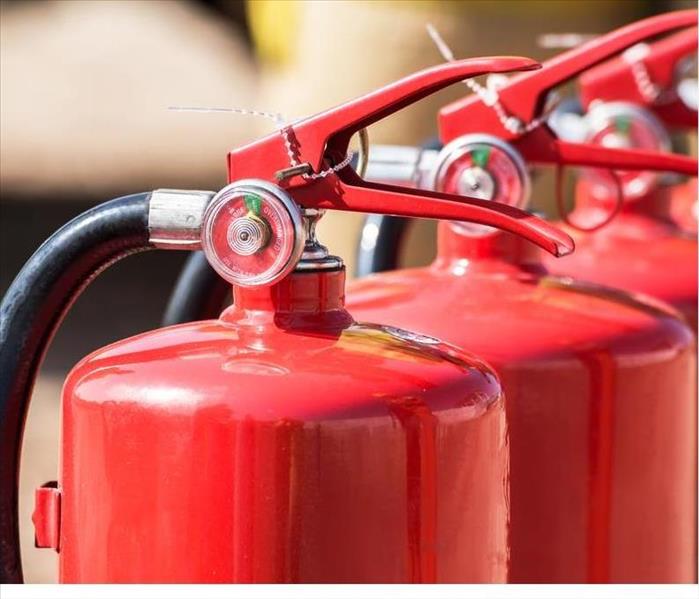 Always have in your Temple, TX home a fire extinguisher
Always have in your Temple, TX home a fire extinguisher
How to Select the Best Home Fire Extinguisher
Accessible fire extinguishers throughout your home are vital for its safety. However, fire extinguisher access is only helpful when you’ve chosen the right ones for your needs. The good news is that it’s not difficult to find the right choices for your home.
Extinguisher ABC Ratings
Every extinguisher bears an ABC-series code on the label. That code defines the type of fire the extinguisher will address. A and B are typically followed by a number to define how effective the extinguisher is against those materials. The higher the number, the more effective it will be.
- Class A extinguishers are for traditional home fires, including upholstery, cloth, carpet, paper and wood. Keep these options in living areas and around your fireplace or furnace.
- Class B extinguishers are ideal for cooking fires. Keep one in the kitchen and an extra in the garage in case of gasoline fires.
- Class C extinguishers are electrical fire models. This choice should be your go-to for any electrical fire, whether from an appliance or computer equipment.
Combination extinguishers give you the best of all of those needs. If you are looking for an overall fire preparedness solution in Temple, TX, ABC extinguishers will get the job done in all areas of your home.
Fire Extinguisher Weight Ratings
The weight stamped on an extinguisher canister details the amount of fire retardant; it does not include the canister's weight.
Five-pound extinguishers are usually sufficient for a home fire in most areas if the fire is caught quickly enough. A 10-pound extinguisher in the garage or your basement might be a good investment as well. Fires in those areas can grow quickly, sometimes leaving you in need of a fire damage restoration company, so larger extinguishers are often better.
The right combination of fire retardant solution and weight can ensure that your home's fire hazards are quickly addressed. These tips make it easier to choose the right fire extinguisher for each part of your home.
How the Professionals Restore Electronics After a Fire
5/27/2022 (Permalink)
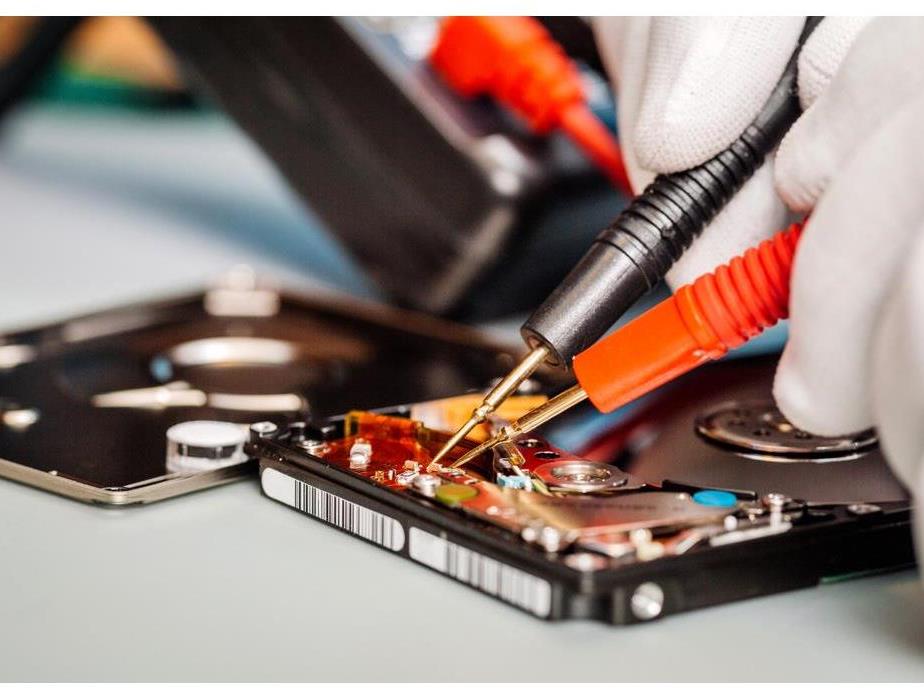 An electrical fire can result in damage to electronic devices that isn't always obvious to the untrained eye.
An electrical fire can result in damage to electronic devices that isn't always obvious to the untrained eye.
How Experts Restore Electronics Following A Fire
Cleaning up after a commercial electrical fire is a challenge. It's possible to repair and restore some smoke-damaged electronic devices, but it requires the specialized knowledge and skills of a professional fire restoration company to ensure every step is done right. These experts will take the following steps to handle computer cleanup in the wake of a fire.
1. Power Down Everything Immediately
First, the restoration professional will make sure all your electronics are disconnected from their power sources before doing anything else. This even includes removing batteries from devices that contain them, such as laptop computers. The professionals will do this only after the fire department declares the area safe.
2. Look for Signs of Smoke Damage
During an electrical fire, soot can be deposited inside electronic devices, where it can act like extra insulation. The device might work normally at first but eventually overheat and malfunction. Smoke deposits can also lead to corrosion over time because some of the elements in smoke are acidic in nature. A restoration professional will carefully inspect your affected devices for smoke and soot buildup on any internal parts and wiring.
3. Use the Right Cleaning Tools and Techniques
Restoration experts know that ordinary household products are not ideal for cleaning electronics after any kind of fire. Even a little bit of moisture can destroy electronics or at least degrade them. Instead, the exterior surfaces are often easily restored with a soft rag, while a can of compressed air is useful for cleaning internal components.
4. Repair or Replace Components and Devices
Fortunately, many of the components in electronic devices are replaceable when cleaning isn’t enough. In some cases, it's better and more economical to just replace the entire device. Restoration experts in Belton, TX, can advise you which is the better solution for each of your devices.
An electrical fire can result in damage to electronic devices that isn't always obvious to the untrained eye. Inspection and cleaning by a qualified professional are necessary to get all your devices safely back in working order.
Protect Your Home After a Fire
4/1/2022 (Permalink)
After A Fire, Make Sure Your Home Is Safe.
After your home in Belton, TX, experiences a fire, the process of returning to normal may seem like a long journey. While a fire damage and restoration specialist will repair, replace and restore it back to its former glory, you still need to protect your home before help arrives. In many cases, windows and other damage happens while extinguishing the flames leave your home exposed. To avoid secondary damage, it is recommended to board up any high-risk areas.
Minimize Risk
While your focus may be on the losses incurred from fire and smoke damage, that isn’t the end of potential risks. An emergency board up helps in more ways than one.
Insurance Coverage Validity: After experiencing a loss, you want to get the most out of your insurance coverage. The longer you wait to cover existing damage, the higher the chance that additional damage will occur. In many cases, that added damage won’t be covered.
Keep Nature at Bay: Any exposed areas are an instant source of further problems. From wind to water to critters, existing issues may easily become much bigger.
Prevent Property Loss: While the fire may have destroyed or damaged many of your belongings, there is still valuable property inside the home. A boarded-up home helps prevent vandals or thieves from entering and looting.
Reduce Liability: The fire may have created structural damage. If people enter it and get it injured, you will be liable for the injuries.
Services Available
Since every situation is different, so is the type of solution that may be needed. If windows or doors are broken or cracked, a simple board up will prevent trespassers from entering. If there is roof damage, installing a tarp over the affected area will prevent Mother Nature from wreaking unwanted havoc. In many cases, using both is the best option to get the most coverage possible.
The sooner you board up exposed areas, the better chances you have at getting your home back to “Like it never even happened.”
Rental Fires: Know Your Responsibilities
1/7/2022 (Permalink)
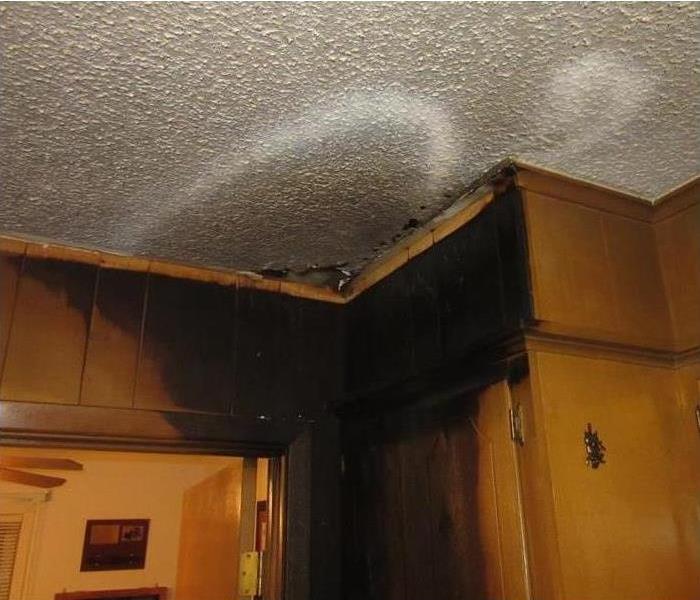 Fire damage in Belton, TX.
Fire damage in Belton, TX.
Three Important Things About Damage Coverage After a Fire
Covering the damages of a devastating fire can be hard enough, but when a rental property is involved, the complexities can quickly multiply. Who pays for what? These are some of the questions that you may face, and if you don’t know the answers in advance, it can cost you big time. Here are three important things to know about damage coverage after a Belton, TX, rental property, or apartment fire.
In general, there are two possibilities for who is responsible for fire damage from a rental or apartment fire. Those are:
- The landlord
- The renter
Each of those stakeholders has a specific set of requirements to ensure full coverage. Knowing them well in advance can make everything go more smoothly.
Landlord Responsibilities
Any time an owner lives off-site from renters, they will need to have insurance for the rental property. Property owner's insurance typically covers damages to the structure, electrical system, plumbing and major appliances. It’s important to note that not all policies cover the latter, so when shopping for insurance, find a policy with the most comprehensive coverage. It may cost a bit more, but it’s worth it in the end when you don’t have to come out of pocket.
Tenant Responsibilities
While property owners’ insurance covers the structure of a building, it’s up to the renter to cover the contents. This is the case for a residential property as well as a commercial property. The renter must file a claim to be reimbursed for things like personal property, furniture, or even important equipment. Don’t make the mistake of avoiding such insurance: Property owners are under no legal requirement to cover the contents lost in the fire.
Don’t make the aftermath of a rental or apartment fire harder than it has to be. Familiarize yourself with your responsibilities when it comes to fire repair to minimize stress.
 Stay warm and safe this winter with these helpful tips! Contact SERVPRO of Temple & Belton for fast fire restoration services.
Stay warm and safe this winter with these helpful tips! Contact SERVPRO of Temple & Belton for fast fire restoration services.



 24/7 Emergency Service
24/7 Emergency Service






